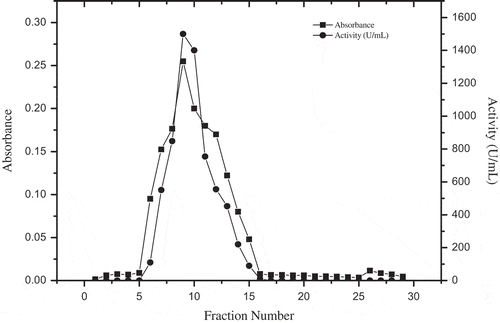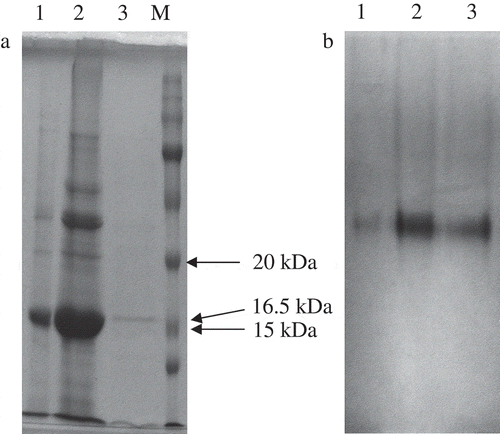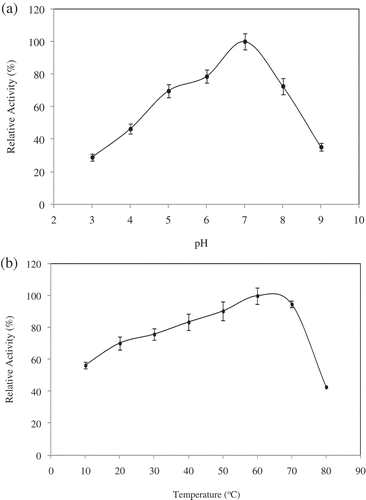Figures & data
Table 1. Purification profile of PPO from D. lotus.
Figure 1. Purification of D. lotus PPO by Sepharose 4B-L-tyrosine-p-amino benzoic acid affinity column.

Figure 2. (a) SDS-PAGE of purified D. lotus PPO. Gel stained with Coomassie Brilliant Blue R-250. M: molecular weight marker; 1: crude extract; 2: supernatant obtained after the acetone precipitation step; 3: PPO purified by affinity chromatography. (b) Native electrophoresis of purified D. lotus PPO. Gel revealed with L-DOPA. 1: crude extract; 2: supernatant obtained after the acetone precipitation step; 3: PPO purified by affinity chromatography.

Table 2. Substrate specificity of D. lotus polyphenol oxidase.
Figure 3. (a). pH activity profile for PPO from D. lotus. The effect of pH on PPO activity was measured for pH 3.0–9.0. The buffers used were: glycine-HCl (50 mM, pH 3.0), acetate (50 mM, pH 4.0 and 5.0), phosphate (50 mM, pH 6.0 and 7.0) and Tris-HCl (50 mM, pH 8.0 and 9.0). (b) Effect of temperature on PPO activity from D. lotus. The dependence of PPO activity on temperature was determined under standard assay conditions between 10 and 80°C. The relative activity percentage was calculated based on the maximum activity taken as 100%; 4-methylcatechol was used as substrate.

Table 3. Effects of various metal ions on PPO activity of D. lotus.
Table 4. Apparent IC50 of some inhibitors of PPO from D. lotus.
Table 5. Percentage inhibition and IC50 values of urease and AChE of D. lotus aquatic extract.
